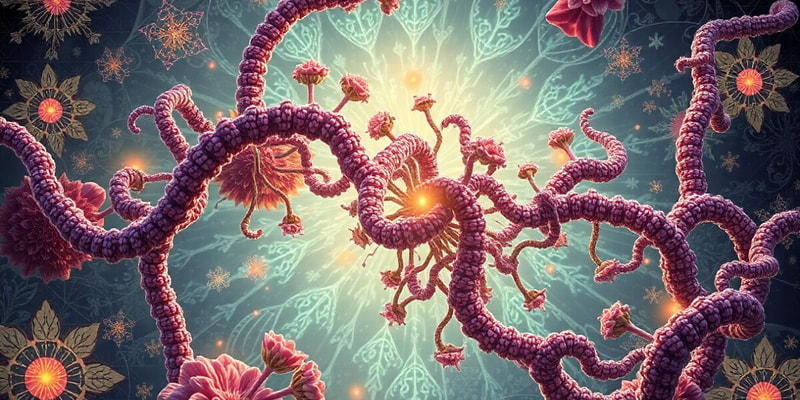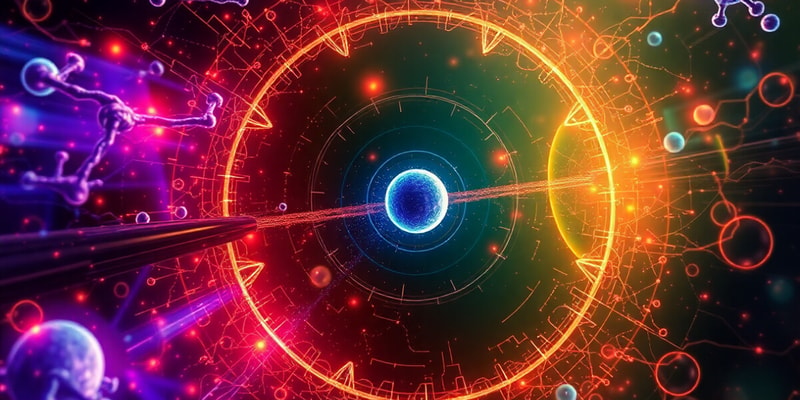Podcast
Questions and Answers
What is the primary function of dimercaprol?
What is the primary function of dimercaprol?
What is the effect of pharmacokinetic antagonists on the agonist?
What is the effect of pharmacokinetic antagonists on the agonist?
How do pharmacological antagonists interact with the receptor?
How do pharmacological antagonists interact with the receptor?
What is the mechanism of orthosteric antagonism?
What is the mechanism of orthosteric antagonism?
Signup and view all the answers
What determines the potency of an antagonist?
What determines the potency of an antagonist?
Signup and view all the answers
What is the effect of allosteric antagonism on the receptor?
What is the effect of allosteric antagonism on the receptor?
Signup and view all the answers
What is the primary difference between agonist and antagonist potency?
What is the primary difference between agonist and antagonist potency?
Signup and view all the answers
What is the effect of pharmacological antagonists on the agonist's response?
What is the effect of pharmacological antagonists on the agonist's response?
Signup and view all the answers
What are the three factors that influence the extent of antagonism?
What are the three factors that influence the extent of antagonism?
Signup and view all the answers
What is the primary difference between physiological and pharmacological antagonists?
What is the primary difference between physiological and pharmacological antagonists?
Signup and view all the answers
Study Notes
Receptor Theory and Efficacy
- Emax can be achieved without full receptor occupancy, challenging Clark's occupation theory.
- Concepts developed include stimulus, efficacy, and spare receptors.
- Agonists can have similar affinities for muscarinic receptors but differ in contraction ability, referred to as efficacy.
- Intrinsic efficacy of an agonist defines its capacity to initiate a response; some agonists achieve a 50% response at varying binding percentages.
Intrinsic Activity
- Maximal response of a drug may differ from the system's maximal response, indicated by intrinsic activity.
- Defined as the ratio of Emax of the test drug to Emax of the most potent agonist in the series.
- Full agonists achieve the system's maximum response with intrinsic activity of 1; partial agonists elicit submaximal responses, with intrinsic activity greater than 0.
Spare Receptors
- Cells contain variable numbers of specific receptors, which can be altered through upregulation or downregulation.
- Receptor number affects drug responsiveness, with receptor reserve impacting the efficacy of drug action.
Efficacy Definition
- Efficacy is dependent on both drug nature and tissue type; the same drug may display varying efficacies across different tissues.
- Different drugs exhibit different efficacies in the same tissue based on their ability to generate a stimulus upon receptor binding.
Intrinsic Efficacy
- Defined as a measure of a drug's ability to produce a stimulus independent of receptor number (Rt).
- Two agonists can have distinct intrinsic efficacies based on how they stabilize the receptor's active state, impacting receptor reserve.
Quantification of Agonist Activity
- EC50 values can be used to compare the potency of full agonists; ratios remain constant if the activation mechanism is similar.
- For partial agonists, EC50 estimates affinity, serving as a measure of efficacy.
Rate Theory
- Proposed by Paton, this theory suggests stimulus comes from initial receptor occupation and diminishes with continued occupation.
- Desensitization occurs as the rate of receptor occupation decreases due to declined unoccupied receptor availability.
Desensitization and Tachyphylaxis
- Desensitization leads to reduced stimulus upon constant agonist presence, as fewer receptors remain unoccupied over time.
- Tachyphylaxis describes rapid desensitization upon repeated agonist exposure.
Comparison of Rate and Occupation Theories
- Occupation theory postulates ongoing stimulation as long as receptors are occupied.
- Rate theory posits that stimulus is conferred during initial receptor interaction, requiring the agonist to dissociate and rebind for continued effect.
Antagonists
- Antagonists are more common in pharmacotherapy than agonists and function to oppose agonist effects.
- Types include:
- Chemical antagonists which deactivate agonists, e.g., Dimercaprol.
- Physiological antagonists, e.g., Histamine versus Omeprazole.
- Pharmacokinetic antagonists that modify the agonist's absorption or metabolism.
Pharmacological Antagonists
- Compete with agonists for receptor binding without eliciting a response.
- Potentiation or antagonism affects the agonist's effects based on the presence of the antagonist.
Extent of Antagonism
- Dependent factors include:
- Potency—amount of antagonist bound to receptors.
- Mechanism—binding location relative to the agonist.
- Kinetics—how long the antagonist remains bound.
Antagonist Potency and Mechanism
- Potency relies on antagonist affinity, assessed via the antagonist-receptor complex’s equilibrium dissociation constant.
- Antagonism mechanisms are classified as:
- Allosteric—bind at separate sites and induce conformational changes.
- Orthosteric—bind at the same site as the agonist, preventing its binding.
Studying That Suits You
Use AI to generate personalized quizzes and flashcards to suit your learning preferences.
Description
Test your knowledge of receptor theory, efficacy, and spare receptors in pharmacodynamics. Learn about the concepts developed by Prof. Arthur Butt Stephenson and how they differ from Clark's occupation theory.




